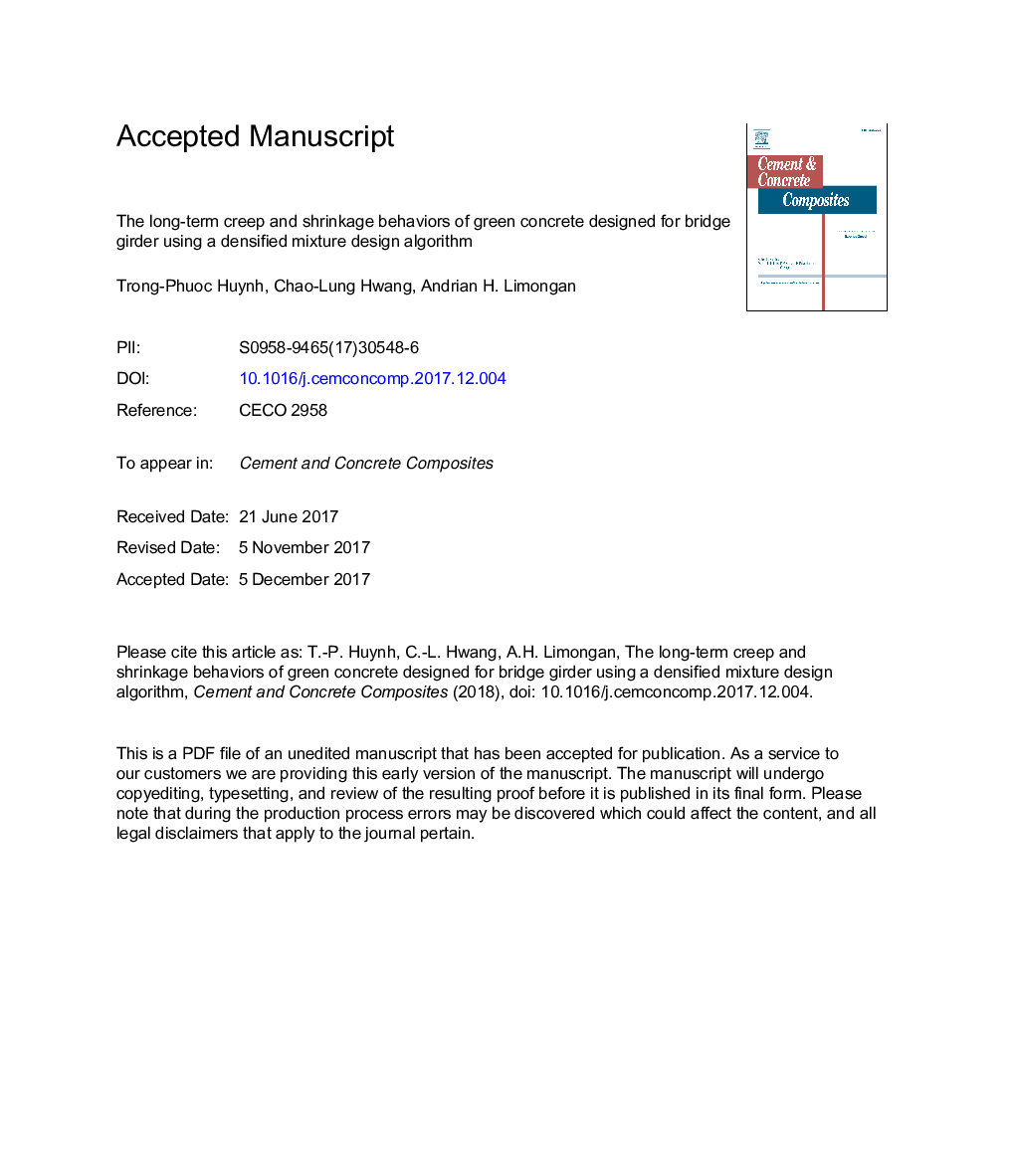| Article ID | Journal | Published Year | Pages | File Type |
|---|---|---|---|---|
| 7883930 | Cement and Concrete Composites | 2018 | 38 Pages |
Abstract
Creep and shrinkage behaviors are critical factors in the precast/prestressed concrete industry because these factors allow engineers to assess the long-term performance of concrete and to develop life-cycle estimates for concrete structures. The current study presents the results of an experimental work that addresses creep and shrinkage behaviors as well as the development of compressive strength in ordinary Portland cement concrete (OPC), high-performance concrete (HPC), and self-consolidating concrete (SCC). The concrete mixtures created for the present study were used to fabricate prestressed bridge girders. A conventional method (ACI) was used to design the mixture proportion for OPC and a densified mixture design algorithm (DMDA) was used to design the mixture proportions for HPC and SCC. All concrete mixtures had the same target strength of 69Â MPa (10000 psi) at 56 days. Additionally, a comparative performance in terms of strength development and creep and shrinkage behaviors of ACI and DMDA concrete is performed in the present study. Test results show that all of the samples attained the target strength after 28 days of curing and that the strengths of each continued to increase afterward. Importantly, the incorporation of pozzolanic materials into concrete mixtures affected the propagation of creep strain and shrinkage positively. Furthermore, the DMDA concrete sample delivered better long-term performance than ACI concrete in terms of compressive strength, creep strain, and shrinkage.
Keywords
Related Topics
Physical Sciences and Engineering
Engineering
Industrial and Manufacturing Engineering
Authors
Trong-Phuoc Huynh, Chao-Lung Hwang, Andrian H. Limongan,
